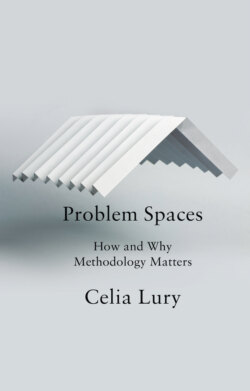Читать книгу Problem Spaces - Celia Lury - Страница 14
– 1 – What is a Problem Space?
ОглавлениеWould anything change if sensible things were conceived of as ‘across’ space, rather than ‘in’ space?
Mel Bochner (2008: 74)
Five approaches relevant to the elaboration of concept of a problem space are introduced here. A first pairing juxtaposes the methodology proposed by John Dewey, an early twentieth-century advocate of pragmatism with the approach to the ‘artificial sciences’ developed by Herbert Simon, one of the mid-twentieth-century founders of cognitive science. The second pairing is feminist theorist Donna Haraway and French sinologist François Jullien. The fifth approach is that of the anthropologist Arjun Appadurai. These final three authors all write at the end of the twentieth and the beginning of the twenty-first century.
The five are not introduced here because they are the ‘best’ exponents of problem spaces (as far as I am aware only Simon uses the term). Why I bring them together, despite their very different vocabularies and concerns, is that, in their discussions of methodology, all of them focus on the process of making or composing problems; that is, for none of them are problems pre-given. They are all also concerned with the surrounds, environments or contexts – the spaces – in or with which problems emerge; indeed, that they do not assume space to be a container for problems is the primary reason for their selection. Instead they consider sensible things – situations transforming into problems – as emerging in movements ‘across’ space, as the artist Mel Bochner puts it. At various points in the presentation of their approaches their contribution to an understanding of a compositional methodology is highlighted.
